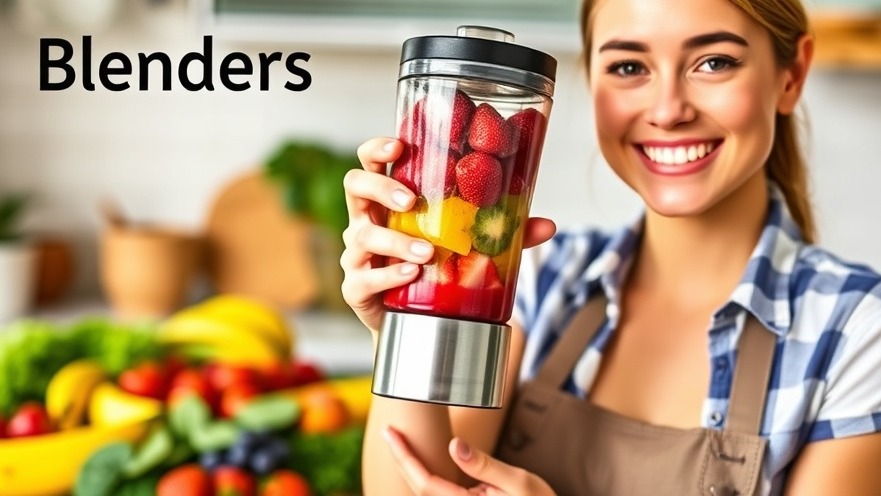
Discovering the Best Personal Blenders for Your Smoothie Adventures in 2025
As smoothie lovers, we know how essential it is to find the right blender for whipping up delicious, healthy drinks. If you're searching for the best personal blenders in 2025, look no further. We've curated an engaging selection based on expert reviews, community opinions, and personal experiences that will help you make smoothies like a pro, even if you're just starting out!
1. Top Pick - Nutribullet Pro 900: The Smoothie Champion
The Nutribullet Pro 900 stands out as our top choice due to its powerful motor and ease of use. With a 900-watt engine, this blender crushes fibrous greens and icy ingredients effortlessly, offering a smooth consistency that your taste buds will love. Plus, it’s compact and perfect for small kitchens! You can get the Nutribullet Pro for around $110, an investment that promises durability and delicious smoothies!
2. Budget-Friendly Option: Cuisinart Soho Personal Blender
If you're looking for something that won't break the bank, the Cuisinart Soho Personal Blender is only $80! It’s stylish, efficient, and does a great job at blending ingredients into smooth drinks. The minimalist design is appealing, and it tails well to those who appreciate simplicity without compromising on quality.
3. Portable Bliss: Beautiful by Drew Barrymore Portable Blender
For the smoothie enthusiasts on-the-go, consider the Beautiful by Drew Barrymore Portable Blender, priced at just $57! This battery-powered marvel allows you to make fresh smoothies anywhere, from work to the beach. While it has a smaller capacity, its convenience makes it a fantastic choice for those busy days.
4. Best Value for a Little Extra: Beast Mini Blender Plus
For versatility, the Beast Mini Blender Plus is a fantastic option at around $119. With stylish design and multiple cup sizes, it allows you to blend everything from smoothies to salsas and more. Perfect for families or those who love to entertain, it offers both power and style!
5. Practical Cleaning and Maintenance Tips
Cleaning your blender should be hassle-free! Most of the blenders we recommend are easy to disassemble and can be washed in your dishwasher. For stubborn bits of food, mix some warm water with a drop of soap and pulse the blender before rinsing it out.
Are you excited to discover your new favorite blender? Don't forget to share your experiences and any recommendations with fellow smoothie lovers. After all, the smoothie community thrives on shared creativity and flavor explorations!
 Add Row
Add Row  Add
Add 







Write A Comment